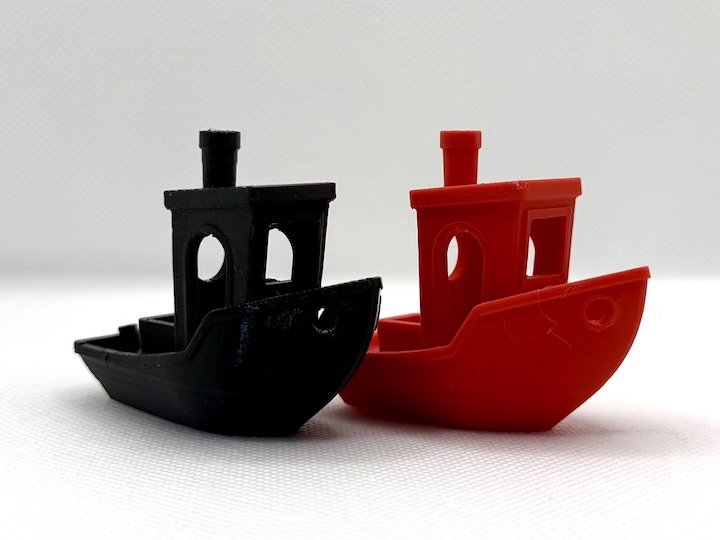A New Material

Since getting a 3D printer almost a year ago, I’ve stuck to PLA. This is the default material for FDM printers, and for good reason. It’s produced from starch rather than petrochemicals, it prints at low temperatures, and it has decent aesthetic and mechanical properties. It’s a great all-rounder. But it’s not all there is.
My Bambu A1 isn’t enclosed, which rules out higher temperature filaments such as ASA and Nylon. However, there are still a few options. I decided to try PETG, which is similar to PLA but less sensitive to UV and temperature fluctuations, and thus better suited to outdoor applications.
The main downside of PETG is that it’s much more hygroscopic: it absorbs moisture from the environment. Keeping PLA dry is advisable, but with PETG it’s essential. Knowing this, I invested in a basic filament drier (the eSun eBox which also allows you to print with the spool in the box) and some desiccant beads. After a full eight hours of drying, I printed out the traditional test.
The results are shown above; the PETG is the black one, next to one I printed a while ago in red Bambu PLA Basic. I’m pretty happy. First off, the drying seems to have been worth it; I had none of the stringing or popping problems that often come with PETG. The quality is up there with the best I’ve had with PLA, without needing to tweak settings. I also like the glossy finish (but couldn’t manage to get a good photo that showed that off).
So, successful test. Next I’ll try some practical prints; one of my car charger holders is looking a little worse for wear, so a replacement for that is likely to be first on the list. I imagine I’ll still be using PLA for most things, but it’s good to have other tools in the toolbox.